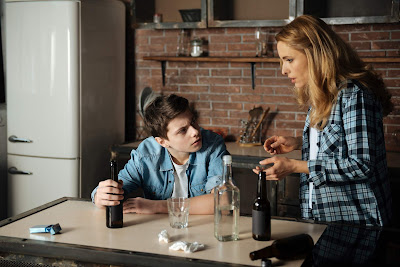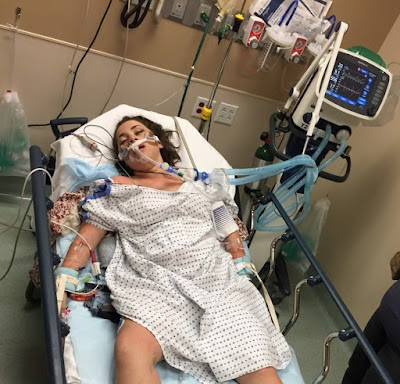They're just doing what we did: Are young risky drinkers really drinking like their parents did?
 One of my favourite lines from a parent usually comes up when they approach me after a Parent Information Evening. They start by thanking me for the talk and then the conversation wanders a bit and you can tell there is something they want to get off their chest ... there was something about what I said that they didn't agree with. You can almost see it bubbling up inside them ... the desperate need to say, "but they're only doing what we did!"
One of my favourite lines from a parent usually comes up when they approach me after a Parent Information Evening. They start by thanking me for the talk and then the conversation wanders a bit and you can tell there is something they want to get off their chest ... there was something about what I said that they didn't agree with. You can almost see it bubbling up inside them ... the desperate need to say, "but they're only doing what we did!"Now I have always made it very clear that I didn't drink alcohol as a teenager, it simply wasn't a part of what my social group at school did. Adding to that was the fact that neither of parents ever really drank and I honestly can't remember ever seeing a bottle or can of any alcohol in our family home at anytime, apart from when they held a party or barbeque at home for their group of friends (and even then I don't think I ever saw any real excessive drinking). It simply wasn't a part of my life! Now I know that this isn't the norm - all the evidence shows that alcohol is clearly a part of most young people's lives, as it was for their parents and even for many of their grandparents to some extent - that said, this belief that today's young people are simply doing what they did needs to be challenged.
Firstly, let's make sure we clear up who I'm going to be talking about in this piece ... Let's not forget that not all young people are the same. Even when it comes to alcohol use, you quickly realize that young people are not one homogenous group. Basically you can break teenagers into three key categories, firstly we have the abstainers. When you look at the most recent Australian Secondary School Alcohol and Drug (ASSAD) Survey, one third of 17 year olds classify themselves as 'non-drinkers', with just over 40% of 16 year olds reporting that they don't drink. We rarely speak about these young people and their decision; in fact we completely ignore them, making them feel even more alienated than they already feel within their peer group.
The next group comprises the ones who drink responsibly. They don't drink regularly and when they do they usually consume a small amount. This does not mean there are no risks involved in their drinking behaviour, but we do need to acknowledge that these young people are trying to do 'the right thing'.
The final group is the one that I want to talk about - those that drink in a 'risky way' - they're the loudest and the most obvious of the three, and they certainly get the most media attention but the evidence suggests that they are a shrinking group, as you can see in the two graphs below that show the number of 12-15 year old 'current drinkers' (those that drank alcohol in the previous week) from 1984-2011 and the same data for 16-17 year olds.
 Even though they are not as large a group as they once were (these graphs show that clearly), other data shows that this risky group appear to be drinking at much riskier levels than in the past, are doing so at a younger age and it is what they are drinking that is so concerning - we now have a generation of spirit drinkers.
Even though they are not as large a group as they once were (these graphs show that clearly), other data shows that this risky group appear to be drinking at much riskier levels than in the past, are doing so at a younger age and it is what they are drinking that is so concerning - we now have a generation of spirit drinkers.  When I speak to parents who did drink in their teens, their memory of their first alcohol experience is usually in a park, squatting behind a tree with a few friends knocking back a 'box of wine'! It was experimental, they had no idea what they were doing and were usually pretty terrified through the whole experience. They had to get someone to buy the alcohol, they had to find the money to pay for it (or they stole it from their parents) and, as a result, they usually didn't have very much alcohol - even the cheap stuff was relatively expensive if you had to find the money yourself ...
When I speak to parents who did drink in their teens, their memory of their first alcohol experience is usually in a park, squatting behind a tree with a few friends knocking back a 'box of wine'! It was experimental, they had no idea what they were doing and were usually pretty terrified through the whole experience. They had to get someone to buy the alcohol, they had to find the money to pay for it (or they stole it from their parents) and, as a result, they usually didn't have very much alcohol - even the cheap stuff was relatively expensive if you had to find the money yourself ...Most of the young people today are not drinking in parks (although that does happen of course) and they are not having to find the money for alcohol themselves - many of them are drinking at teenage parties and are being provided a couple of bottles by their parents. I truly believe that many parents think they are doing the 'right thing' - their memory of drinking in a park is frightening and they worry that if their teen does the same they will be at great risk. But think about it for five seconds and you realize that a teenage party is just as dangerous, maybe even more so, than a park. At least in a park your senses are heightened - it's not a nice place, you certainly don't want to hand around there for very long and there is always the fear that you could be caught. There is no fear at a teenage gathering and as I often say, almost every adolescent alcohol death I have been involved with over the past 20 years occurred at a party where alcohol was either provided or tolerated ...
There is also the belief that they won't drink as much if they're under 'adult supervision'. The ASSAD Survey blows this out of the water when you look at the risky drinkers. The graph below shows the average number of drinks consumed by current drinkers, many of whom reported that they drank under adult supervision. Almost seven standard drinks (5.7) were consumed on average by 15 year old young men, with 9.5 drinks being reported by 17 year old males.
But it is the spirit consumption that concerns me the most - I have raised this issue many times before so I won't harp on about it again - but I don't care who you are (unless you are a parent in their mid to late 20s and you were the first generation to kick this trend off - shame on you!), you would have been an unusual teen if you were drinking spirits (or even spirit-based drinks) weekly or fortnightly in your mid to late teens. Beer and wine-based drinks were the preferred forms of alcohol in the past (although blackberry nip keeps getting brought up by mothers remembering their past indiscretions!) - spirits were simply too expensive and not something that was even attractive to the average adolescent.
So many of our young people are trying to do the right thing and there are some very encouraging signs in terms of the growing number of 'non drinkers' amongst our teens, as well as smaller numbers at the risky end. That said, it isn't helpful when we have parents who dismiss the underage drinking issue by responding to calls for changes to be made around alcohol laws and the availability and sale of alcohol products by making ridiculous statements like "they're just doing what we did!" It's not the truth when it comes to the 'pointy end' of the market and it's simply not helpful.




Comments
Post a Comment